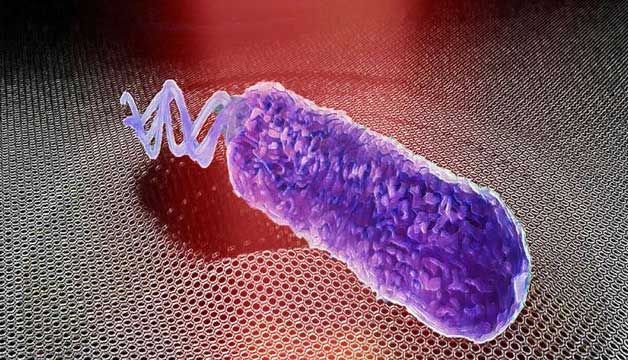Have you ever wondered if bacteria produce special sounds? According to scientists, if we know how to listen to bacteria, we can determine whether they are alive or not.
A team of researchers from Delft University of Technology (the largest public university in the Netherlands), led by Dr. Farbod Alijani, has successfully captured the noise of a type of bacteria using graphene (the thinnest and strongest form of carbon). This research has been published in the journal Nature Nanotechnology.
When bacteria are killed using antibiotics, those sounds stop. Of course, bacteria will “not be silent” when they resist antibiotics.

Bacteria can produce noise – (Image: PHYS.ORG).
Dr. Farbod Alijani’s team initially focused on the fundamental mechanics of the supermaterial graphene. However, at one point, they wondered what would happen if this extremely sensitive material came into contact with a biological entity.
Mr. Alijani stated: “Graphene is a form of carbon consisting of a single atomic layer and is also known as a wonder material. It is incredibly strong with excellent electrical and mechanical properties, and it is also extremely sensitive to external forces.”
This research team began collaborating with the nano-biology group of physicist Cees Dekker and the nano-mechanics group of Professor Peter Steeneken, along with Drs. Aleksandre Japaridze and Irek Roslonn, to conduct their initial experiments with E. coli bacteria.
Physicist Cees Dekker remarked: “What we observed is astonishing. When a bacterium attaches to the surface of the graphene piece, it generates random vibrations with amplitudes as low as a few nanometers that we can detect. We can hear the sounds of this type of bacteria.”
The minuscule vibrations result from the biological processes of the bacteria, primarily contributed by their flagella (the tails on the surface of the cells that propel the bacteria).
“To understand how tiny these vibrations on graphene are, it’s worth noting that they are at least 10 billion times smaller than a punch from a boxer. However, these nano-sized vibrations can be converted into audible sound recordings,” Mr. Alijani explained.
This research has significant implications for detecting antibiotic resistance.
The experimental results show that if the bacteria resist antibiotics, the vibrations continue at the same level. When the bacteria are sensitive to the drugs, the vibrations decrease until one or two hours later, when they disappear completely.
Dr. Farbod Alijani stated: “In the future, we aim to optimize our graphene-based antibiotic-sensitive platform. Ultimately, it could be used as an effective diagnostic toolkit to quickly detect antibiotic resistance in clinical practice.”
“This will be an invaluable tool in the fight against antibiotic resistance, an increasing threat to human health worldwide,” Mr. Peter Steeneken emphasized.
















































